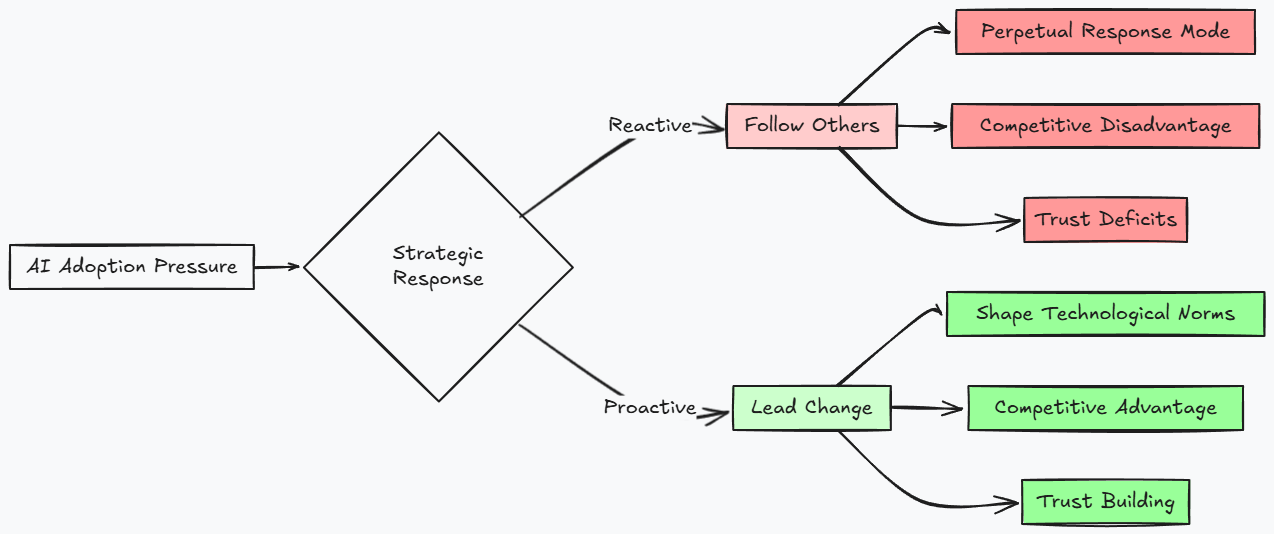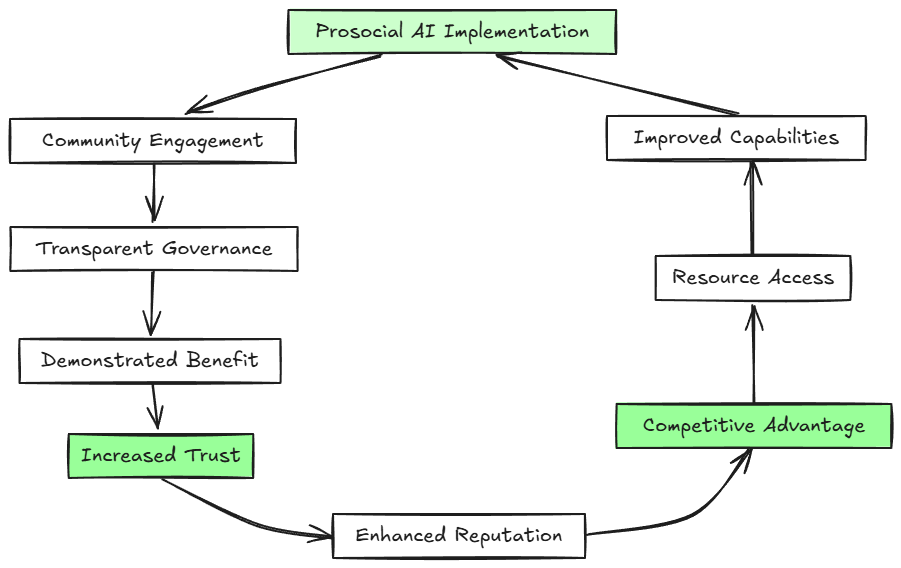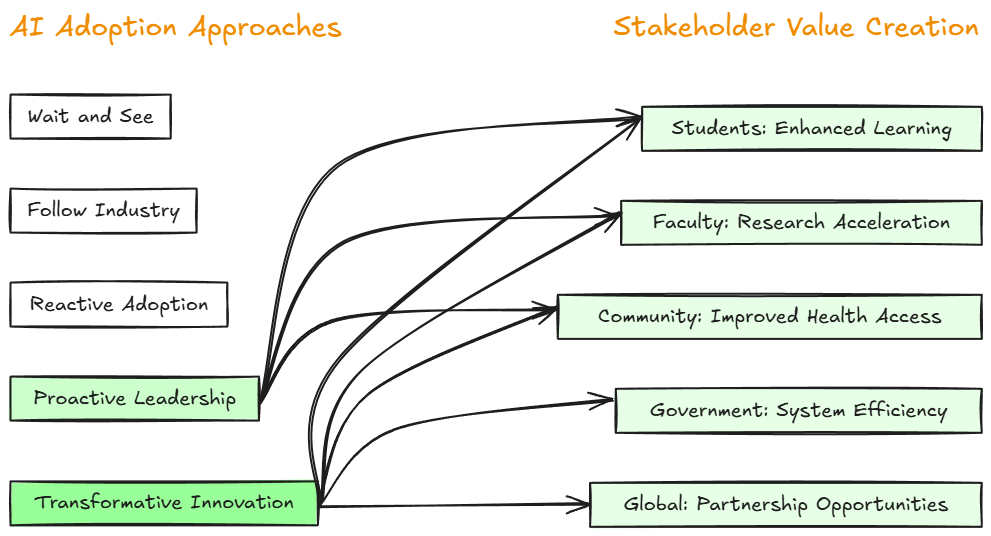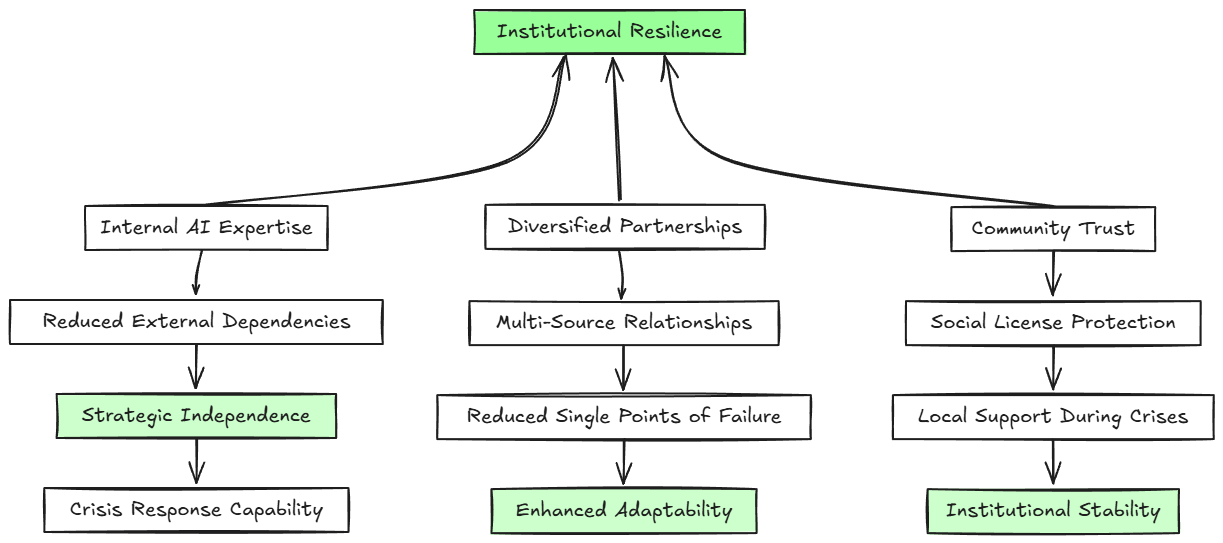Is This A Good Idea? The Problem With Intelligence
Strategic AI Adoption for Prosocial Competitive Advantage
Abstract¶
The introduction of cheap, accessible, and performant artificial intelligence (AI) systems is changing social knowledge dynamics. This presentation examines whether AI amplifies deep-rooted concerns about antisocial technology use and demonstrates how prosocial organizations can transform these concerns into sustainable competitive advantages through strategic adoption guided by metagame analysis.
Is This A Good Idea?¶
The Stakes Are Higher Than We Think¶
- AI adoption decisions made today will define institutional competitive positioning for decades
- Public trust in AI is fragile and institutional reputation is at stake
- Early adopters who get it right gain sustained advantages
- Those who get it wrong face lasting trust deficits
The Amplification of Ancient Fears¶
Technology Anxiety: A Historical Pattern¶

Global GDP over the last 1000 years
Historical Technology Resistance Patterns
| Technology | Era | Predicted Cost | Benefit |
|---|---|---|---|
| Printing Press | 1450s | Information control, social disruption | Transformed knowledge access |
| Telegraph | 1840s | Job displacement, social isolation | Enhanced global communication |
| Telephone | 1880s | Privacy invasion, social breakdown | Revolutionized personal connection |
| Internet | 1990s | Information overload, social fragmentation | Created digital society |
| AI | 2020s | All of the above + algorithmic control | To be determined |
Pattern Recognition: Each transformative technology triggers similar fears about human agency, social control, and antisocial use Gautum, 2024. The outcome is usually a mix of social costs and benefits.
Contemporary Anxiety: Cheap, Accessible, Performant AI¶
Privacy and Data Security King & Meinhardt, 2024
- AI systems require vast amounts of data, driving indiscriminate collection of personal and sensitive data
- Individuals potentially “unknowingly divulging personal information to AI systems”
AI is bringing out antisocial behaviour in Australian workers and this is perhaps more of an immediate concern than whether it will cost jobs. ... It’s worrying that the majority of white-collar workers would rather interact with a machine than a work mate.
- Amanda Gordon, Indeed’s Workplace Psychologist Tilo, 2024
Workplace Social Disruption Sadler, 2024
- Nearly 1/3 of AU workers trust AI over human coworkers
- use AI specifically to avoid human interaction
- AI usage “encouraging antisocial behaviour” and “exacerbating epidemic of loneliness”
Algorithmic Transparency Crisis
- “Black box” decision-making undermines accountability
- Erosion of capacity to rectify erroneous decisions
Strategic Framework: Metagame Analysis¶
What Is The Metagame?¶
Metagame: the broader strategic context in which a game or system operates, including the assumptions, norms, and external factors that influence optimal play.
Metagaming: the act of adapting one’s strategy based on the current “meta” — anticipating strategies, exploiting patterns, or responding to changes in the environment beyond the game’s formal rules.
It’s the game beyond the game
In AI Adoption Context:
- Understanding not just immediate tactical decisions
- Analyzing broader strategic landscape and ripple effects
- Anticipating competitive responses and community reactions
- Positioning for long-term advantage rather than short-term optimization
Understanding System Complexity¶
Table 2:Modernized version of Stafford Beer’s classification of systems
| Systems | Simple | Complex | Exceedingly Complex |
|---|---|---|---|
| Deterministic | Thermostat | Computer | Empty |
| Billiards | Planetary System | ||
| Factory Layout | Automation | ||
| Probabilistic | Gambling | Stock Trading | Economy |
| Jellyfish Movement | Conditioned Reflexes | Large Institution | |
| Statistical quality control | Industrial profitability | Brain | |
Probably the best example of an [modern] system of this kind is the [Institution] itself. The [Institution] is certainly not alive, but it has to behave very much like a living organism. It is essential to the [Institution] that it develops techniques for survival in a changing environment: it must adapt itself to its economic, commercial, social and political surroundings, and it must learn from experience.
- Stafford Beer, Cybernetics and Management, 1959
Key Insight: Complex institutions operate as exceedingly complex probabilistic systems requiring adaptive, responsive approaches to AI integration.
The Strategic Choice Point¶

Key Insight: Organizations that engage in proactive strategy gain competitive advantage by shaping rather than responding to technological norms.
Prosocial Power in AI Adoption¶
Prosocial Behaviour:
- Demonstrates willingness to invest in others, fostering trust
- Strengthens institutional relationships through positive feedback loops
- Generates sense of community and belonging
Trust as Strategic Asset¶

Figure 3:The Trust-Building Advantage: Prosocial AI adoption creates self-reinforcing cycles that become competitive moats.
Strategic Implication: Trust isn’t just nice-to-have—it’s the fundamental resource determining AI adoption success or failure Kakade, 2025
Metagame Analysis: Strategic Value Matrix¶

Figure 4:Finding: Proactive leadership and transformative innovation approaches generate highest strategic value across stakeholder groups.
Risk Mitigation Strategies¶
Geopolitical Resilience Through AI¶

Strategic Insight: Prosocial AI adoption builds multiple forms of resilience simultaneously.
Long-Term Strategic Positioning¶
Result: Competitive advantages that compound over time and become increasingly difficult for rivals to overcome.
The Choice Before Us¶
The alternative: Reactive adoption that surrenders the strategic initiative to competitors and perpetuates community distrust.
- Gautum, N. (2024). Unraveling the Social Impacts of Artificial Intelligence. In UCDavis Office of Research. https://research.ucdavis.edu/unraveling-the-social-impacts-of-artificial-intelligence/
- King, J., & Meinhardt, C. (2024). Rethinking Privacy in the AI Era: Policy Provocations for a Data-Centric World [White Paper]. https://hai.stanford.edu/assets/files/2024-02/White-Paper-Rethinking-Privacy-AI-Era.pdf
- Tilo, D. (2024). AI “disconnecting” Employees from Each Other. In Human Resources Director. https://www.hcamag.com/au/specialisation/hr-technology/ai-disconnecting-employees-from-each-other-indeed/500164
- Sadler, D. (2024). Workers Would Rather Talk to AI than Colleagues. In Information Age. https://ia.acs.org.au/article/2024/workers-would-rather-talk-to-ai-than-colleagues.html
- Kakade, S. (2025). How to Gain Public Trust for AI in Government? We Need a Social License. In Hertie School. https://www.hertie-school.org/en/digital-governance/research/blog/detail/content/how-to-gain-public-trust-for-ai-in-government-we-need-a-social-license